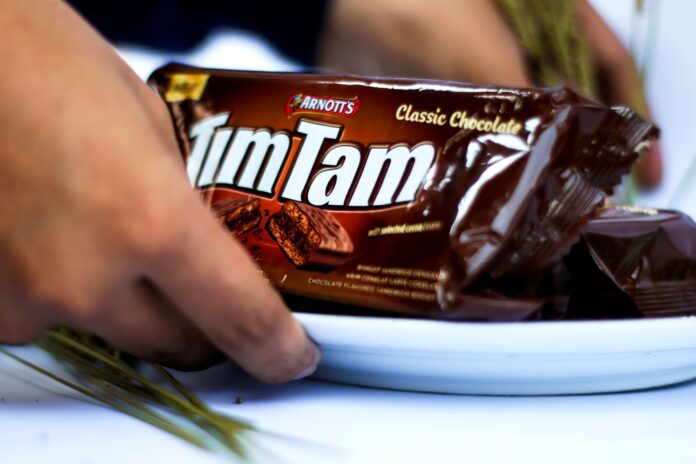Coles and Woolworths executives have dunked a sticky question on why Tim Tams are cheaper in London than Australia in the lap of biscuit maker Arnott’s.
A Senate committee is examining cost-of-living issues and what the federal government can do to reduce pressure on households.
Woolworths chief commercial officer Paul Harker and Coles head of public affairs Adam Fitzgibbons said the supermarkets’ suppliers were facing increasing inflationary pressures.
Senator Jane Hume asked why packets of Tim Tam chocolate biscuits made by Australian-headquartered Arnott’s were more expensive in Coles and Woolworths than at UK supermarket chain Tesco in London.
Mr Harker said it was a question for manufacturer Arnott’s and Woolworths wasn’t privy to the details of commercial deals with others in different markets.
“I don’t know what arrangements they have selling in the UK market and what margins they’re expecting,” he said.
“We have negotiated the best standard cost that we can … and we put all our efforts into negotiating promotions.”
An Arnott’s spokesperson said the company invested in promotional programs so people could buy the biscuit at great value year-round.
The average price of original Tim Tams Australia-wide over the past 12 months was $3.15, while UK consumers paid $4.50, they said.
On Friday, a 200g packet was listed online by Woolworths for $6 while Coles had dropped their usual $6 price to $4.50.
The two supermarkets have been under increasing scrutiny, with the national consumer watchdog alleging they broke the law by hiking prices before offering “discounts”.
The claims relate to 266 products at Woolworths over 20 months and 245 products for Coles over 15 months.
An interim September report from the watchdog found the major supermarkets acted as an “oligopoly” with limited incentive to compete on price.
“I don’t dispute that there are a limited number of supermarket chains in Australia,” Mr Fitzgibbons said.
“(But) a high concentration does not automatically equal a low level of competition. We’ll be making a submission to the report.”
Mr Harker said 13 straight interest rate rises, increasing energy and fuel costs and overseas shipping bottlenecks had impacted suppliers.
From 2022/23 the amount of packaged good suppliers asking Coles for cost increases had more than doubled, Mr Fitzgibbons said.
“That is naturally flowing through across the store,” he said.
Coles was experiencing continued inflation, particularly in relation to shipping costs, Mr Fitzgibbons said.
“Inflation is the enemy of keeping prices low,” he said.
“That is a concern for us going forward because it is those inflationary pressures that effect not just Coles but the supply chain.
“It makes it more expensive for Coles to buy goods and to sell them as well.”
Woolworths, which made $108 million in 2023/24, generated “reasonable” profits and paid $1.35 billion tax last financial year – the same amount paid to shareholders in dividends, Mr Harker said.
Mr Fitzgibbons said Coles made $2.60 in profit for every $100 spent at the chain, adding the figure was consistent with overseas supermarkets.
Coles and Woolworths were committed to keeping prices as low as they could, the pair said.
Do you have an opinion to share? Submit a Letter to the Editor at Sunshine Coast News via news@sunshinecoastnews.com.au. You must include your name and suburb.





